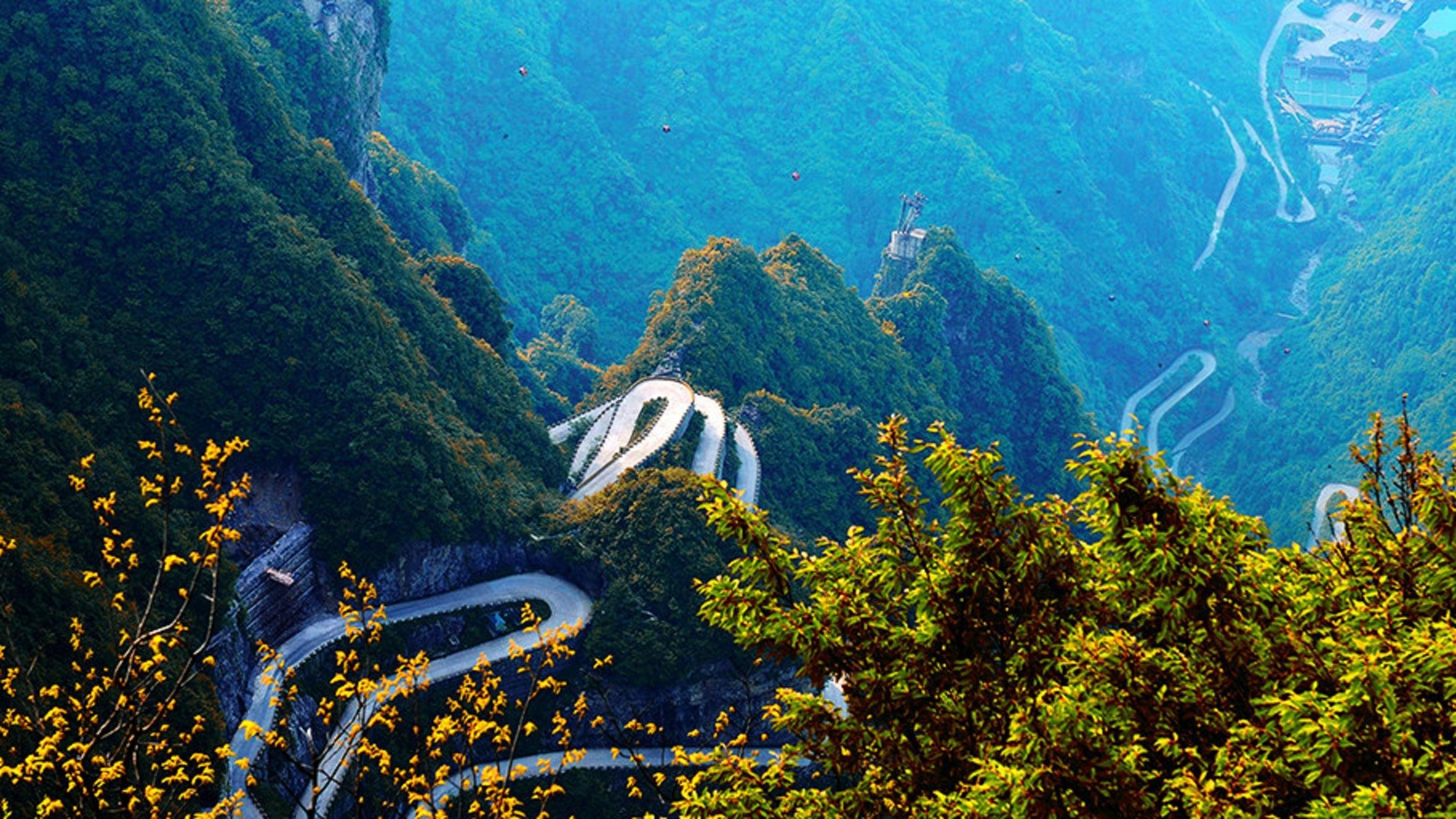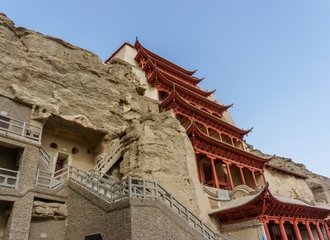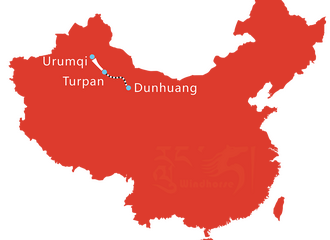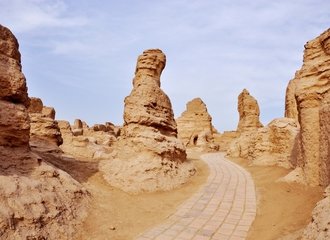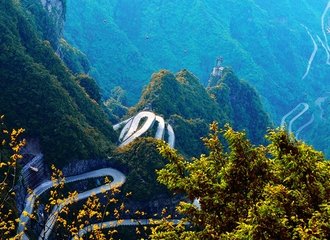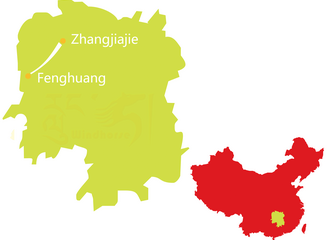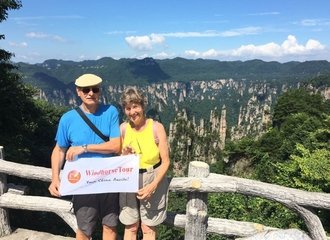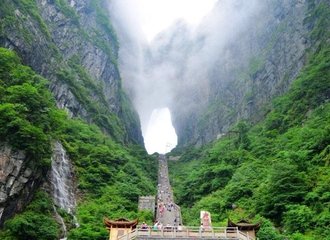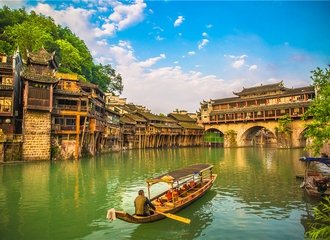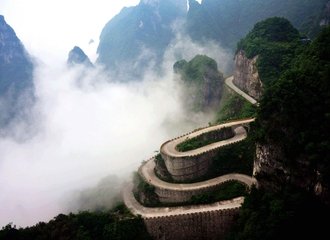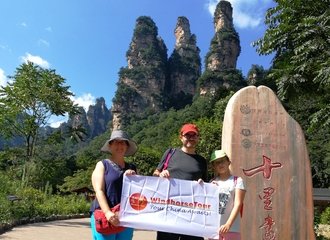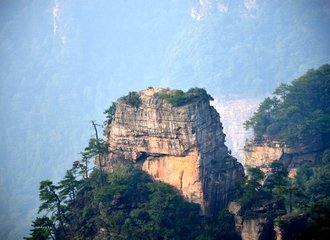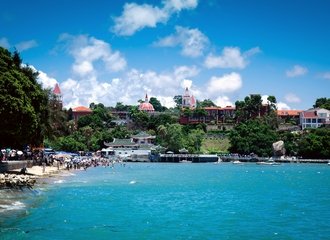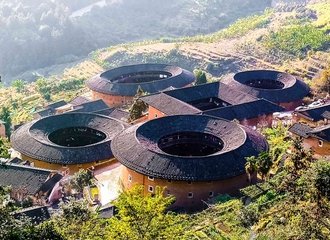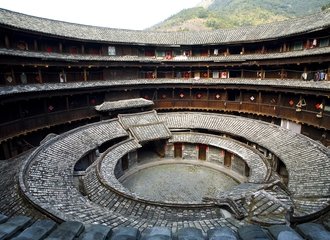Top 5 things to do with kids in Chengdu

Traveling with kids is one of the most delightful things in the world. I have a 1 year old baby girl and I cannot wait to travel with her now! Here, I've gathered five of my favorite things clients of WindhorseTour enjoy to do with their kids in Chengdu. All offer the best in active and healthy traveling.
1 - Panda Volunteering at Chengdu Panda Base
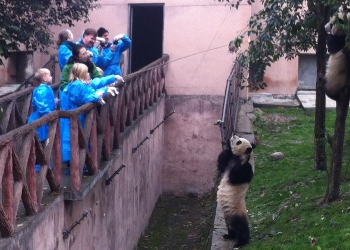
No kids can say "no" to the adorable pandas.
Having a one-day volunteer work at Chengdu Panda Base is one of the top things I encourage you and your kids to do on your Chengdu tour. The experience is joyful and educational.
Pandas symbolize Chengdu. You can even see them on the doors of the taxies in this city.
Located only 10 km. (6 mi.) away from downtown, Chengdu Panda Base (also known as Chengdu Panda Breeding and Research Center) is the closest place to witness this endangered animal.
The panda volunteer program starts at 8:45 every morning. There are a selection of volunteering programs for you and your kids to choose from. They are divided into several small groups and each has their own panda keepers or experts to give instruction before volunteering.
These experts are also good teachers for you to learn more about the pandas. Most of them are well trained with English.
During volunteering time, activities include cleaning the pandas' garden, preparing food, feeding pandas, collecting behavioral data and more. You can spend hours watching pandas eating bamboo, playing and sleeping.
Interesting Facts of Pandas
- Giant pandas are on the brink of extinction, with just over 1,000 pandas left in the world. Scientists are hoping to increase the wild panda population to 5,000 by 2025.
- The life span of giant pandas in the wild is approximately 20 years.
Captive pandas may live to be 25-30 years old. - Many Chinese philosophers believe that the universe is made from two opposing forces, the Yin and Yang. The panda is one symbol of this philosophy with its contrasting black-and-white fur. The Chinese believe that the gentle nature of the panda demonstrates how the Yin and Yang bring peace and harmony when they are balanced.
- Pandas have lived on earth for two to three million years.
- Pandas can stand upright, but their short hind legs aren’t strong enough to support their bodies. A panda’s bones are twice as heavy as the bones of other animals the same size.
- Pandas are pigeon-toed; in other words, they walk with their front paws turned inward.
Read more about Panda Facts. . .
If you and your kids want to learn more pandas, I suggest you spend some time to visit the Giant Panda Museum. This is the world's only thematic museum where you can witness more than 2,140 different samples of rare and endangered animal species.
See the Panda with Us - The First Agency to Arrange Panda Volunteer Tours!
2 - Taste Local Snacks in Jinli Ancient Street
The Chinese have a saying, "(Shi zai Zhongguo, wei zai Sichuan) 食在中国,味在四川", which means China is the place for food but Sichuan is the place for flavor.
As the capital of Sichuan, Chengdu is the best place where you can taste the most authentic Sichuan food.
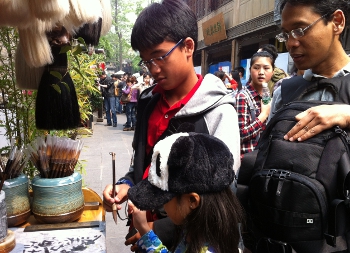
The Chengdu-flavor starts with mouth-singeing peppers. With such fiery food the Chengdu people themselves have a reputation for being a little hot headed an the local women are even referred to as spice girls.
In addition to the lunch and dinner, Chengdu people have a strong passion for snacks. Cheap and quick snacks are the way of life here.
I will recommend a place where you can stroll and taste some local Chengdu snacks, Jinli Street.
This bustling ancient narrow street is a drawing card of Chengdu. The street itself has been rebuilt to show its' historical roots. Now it's crowed with food stalls, restaurants and handcraft shops.
Tasting the snacks is the main reason for many travelers to come to this place. You will find everyone in here are holding skewers of meat, vegetables and smoked tofu when they stroll the narrow street.
Strolling down the street to the place there is a wooden stage which looks like an ancient pavilion. You can easily find many food stalls in the left side. Most of the snacks are spicy, if your kids cannot eat spicy food, you can say "不要辣椒" (búyào làjiāo).
Related tours
Some Snacks You Should Not Miss
- Dandan Mian: is a spicy noodle dish made with peppers, minced meat, garlic and peanuts. The noodles are coated in oily sauce, so it's more like fried noodles or spaghetti than noodle soup.
- Hongyou Shuijiao are jiaozi (Chinese dumplings) served in a sweet and spicy red oil. While dumpling is traditionally Northern fare, these tasty treats are all Sichuan. The serving size is usually pretty small, just a few dumplings, but it's a necessary and welcome addition to your table of snacks.
- Dou hua is a very soft doufu (tofu / bean curd) that is also peddled in Jinli street. Sellers usually open one big bucket from one side of his bike and put a scoop of fresh, soft dofu into a little plastic bowl. Then he'll open the other big bucket and give you a ladle full of spicy sauce, hopefully the kind with peanuts. You then mix the douhua with a little plastic spoon and enjoy.
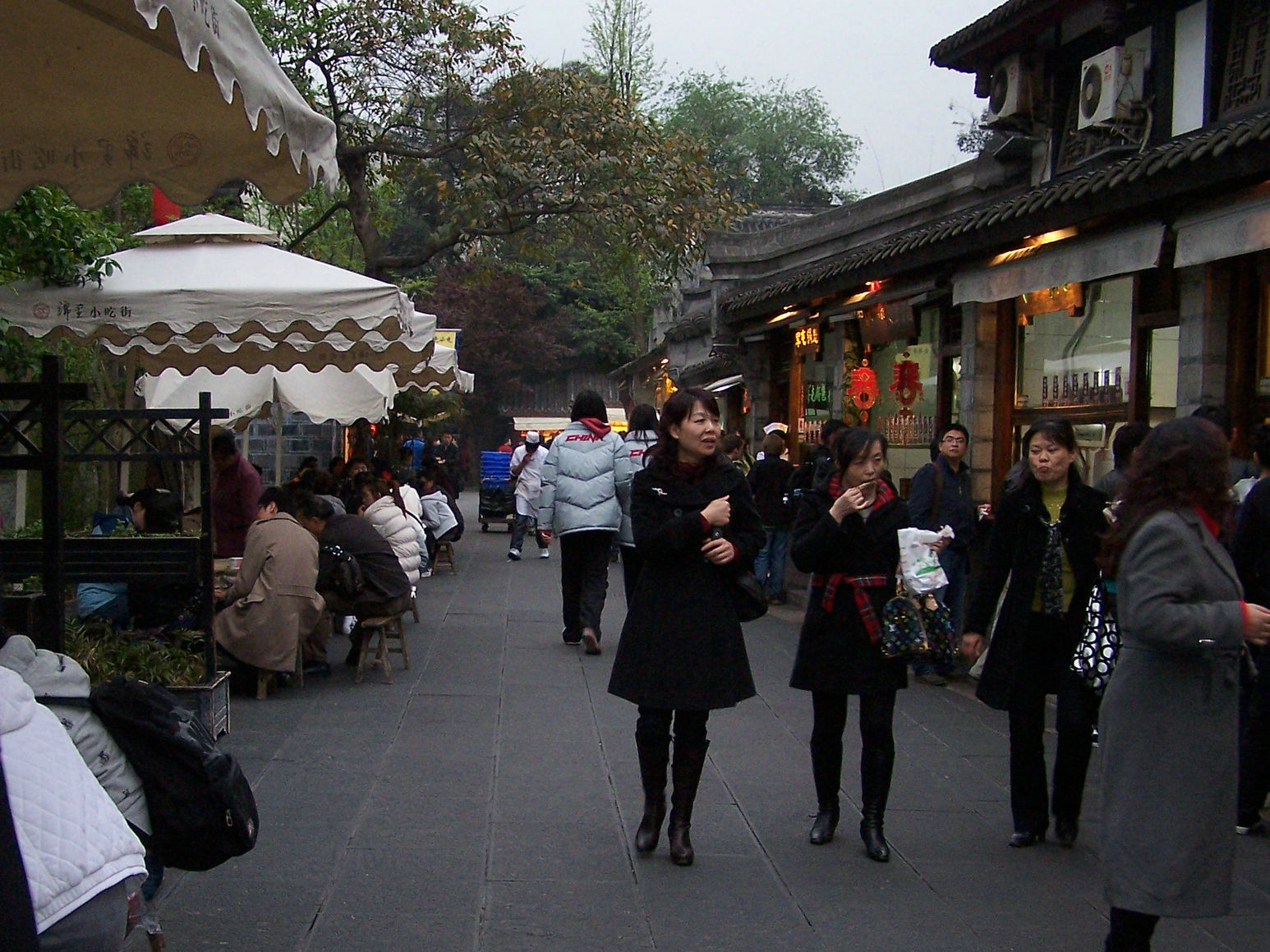
Shangxin Liangfeng, literally "heartbroken cold powder", consisting of starch jelly served cold with seasonings including soy sauce, vinegar, sesame paste, crushed garlic, and lots of chilli. It is too spicy that will make you cry, this is why it is called "heartbroken cold powder".
You should be careful to let your kids taste it.
While tasting the snacks, there are many other things you can do with your kids in Jinli Street.
You can find folk artisans putting on funny shows such as a shadow puppetry show or a hand puppet show. Some traditional arts such as paper-cut and clay figurines made by the skilled craftsmen are sold here. T
hey are so delicate and life-like that you won't be able to resist buying some. From these artworks you will get a taste of the true life of the local people and find some reminders of China's past in the modern city.
3 - Attend Cooking Class
Try your hand at preparing some Sichuan dishes on your own.
The cooking class at Sichuan Culinary Museum will offer you this opportunity to try your hands at Sichuan cuisine.
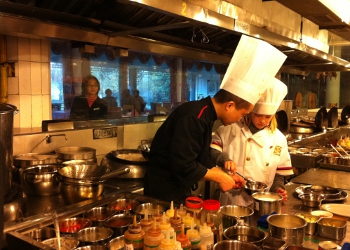
Usually the cooking class lasts for half a day. First you will spend some time in the museum to learn the history and cultures of Sichuan cuisines.
The guides in the museum will show you some materials that commonly used in Sichuan food. I bet you cannot name most of them!
Next it is the show time!
Under the guidance of master chiefs, all your family members will spend time working together. The chiefs work with children to prepare some simple Chinese dishes such as dumplings and noodles, while parents learn how to cook more advanced Sichuan cuisines, all taking place in a modern and safe kitchen environment.
After about half an hour's practice, now you can try your first Sichuan-flavor dish! If you feel good, do not forget the skill! You should really take home to impress your family and friends.
Easy Recipe to Make Mapo Tofu
Try to prepare a classic Sichuan food at home.
Ingredients:
- 3/4 pound firm tofu
- 1/4 pound ground pork
- Marinade:
- 1 tablespoon soy sauce
- Pinch of cornstarch
Other:
- 2 green onions (scallions, spring onions)
- 1 clove garlic
- 2 tablespoons oil for stir-frying
- 1/4 teaspoon Chile paste with garlic
- 2 tablespoons water or chicken broth
- 2 tablespoons black bean sauce
- 1 teaspoon Sichuan peppercorn or ground coriander
Preparation:
- Drain the tofu and cut into cubes. Marinate the ground pork in the soy sauce and cornstarch for 20 minutes.
- Wash the green onions and cut on the diagonal into 1-inch pieces. Peel and finely chop the garlic.
- Heat the wok over medium-high to high heat. Add 2 tablespoons oil. When the oil is hot, add the Chile paste and the chopped garlic. Stir-fry until aromatic (about 30 seconds). Add the ground pork. Stir-fry until the pork is nearly cooked through.
- Lower the heat to medium, and add the brown bean sauce and the tofu cubes. Cook over medium heat until the tofu is browned (8 to 10 minutes). Add water or chicken broth as needed. Stir in the green onion. Just before serving, sprinkle with the Sichuan peppercorn or ground coriander.
4 - Extend Your Trip to Mount Qingcheng and Dujiangyan
Tell your kids that they cannot witness snow at Mount Qingcheng. It's not the snow capped mountains that you can see in Tibet. However, it doesn't mean that it is not an attractive place.
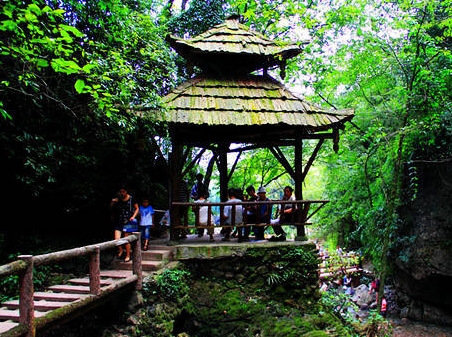
With a summit of only 1,600 m. (5,249 ft.), Mount Qingcheng is an excellent day trip into the subtropics. It is located about 1 hour drive from Chengdu, you can easily access by private cars, buses or bullet trains. It offers the beautiful trails lined with gingko, plum and palm trees, Taoist temples and picturesque vistas.
To make your trip more exciting, you can choose to ride a cable car to have a bird eyes’ view of the mountain or raft through the stream at the less visited Qingcheng Houshan.
While visiting Mount Qingcheng, Dujiangyan is the place I recommend you to stay for a little bit. It is a great irrigation project that was undertaken 2,200 years ago. It is still in use today, irrigating over 5,300 sq. km. (2,046 sq. mi.) of the region's land.
Widely regarded as the "ancestor" of the world's hydro-power culture, Dujiangyan is the only existing ancient hydro-power project, featuring diversions without a dam, in the world. It also functions as a means for preventing floods and plain shipping.
5 - Experience the Teahouse Life at Wenshu Temple
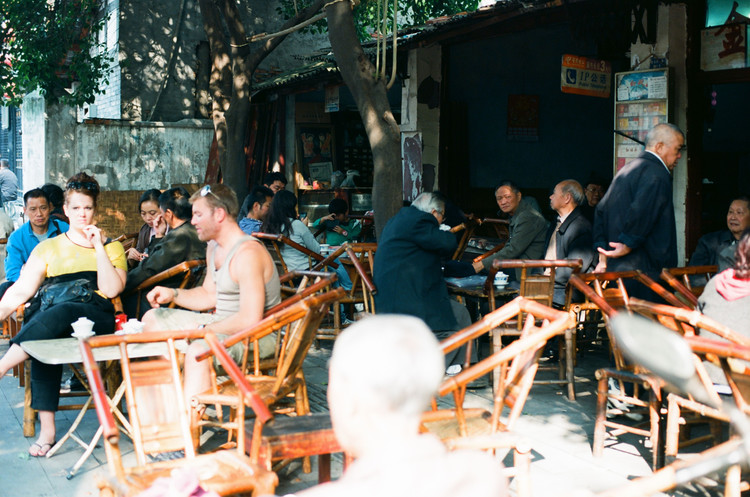
The teahouse in Chengdu is a perfect place for a lazy afternoon in the sun.
Positively nowhere in China more than Chengdu better represents the culture of tea; Traditionally, the teahouse functioned as the center of social life. It used to be a place where people had haircuts, watched opera performances, played mahjong, had their earwax removed (no kidding) and gossiped about their neighbors.
My favorite family type teahouse is in Wenshu Temple, with an amazingly crowded and steamy ambience. This is one of the largest and most lively in Chengdu. Try to order a cup of tea, which will generally cost you 10 RMB. If there are 4 people in your group, I will encourage you try your luck at mahjong. It is not only good for your brain, this rather addictive game can be lots of fun.
When the night falls, you can watch the Sichuan opera in an authentic setting at Shunxing Old Tea House or at Yuelai Tea House, just don't lose yourself in speculating how Bianlian (face change) is done.
Three Types of Face Changes
- In the Wiping Mask routine the actor applies cosmetic paint in a certain position on his face. If the whole face is to be changed, the cosmetic paint is applied to the forehead or eyebrows; for changes on the lower half of the face, paint is applied to his cheeks or nose; or to other specific parts.
- The Blowing Mask routine works with powder cosmetics, such as gold, silver, and ink powders. Sometimes a tiny box is placed on the stage; the actor draws near and blows at the box. The powder will puff up and stick to the face. Sometimes the powder is put in a cup. The secret to success in this act is to close the eyes and mouth and to hold the breath.
- The Pulling Mask routine is the most complicated. Masks are painted on pieces of damask, well cut, hung with a silk thread, and the lightly pasted to the face one by one. The silk thread is fastened in an inconspicuous part of the costume. With a flick of his cloak the performer magically whisks away the masks one by one as the drama develops.
More about Sichuan Opera. . .
Chengdu has always been renowned as one of the most leisurely cities in China. And it's a fascinating destination in tours China. Here you and your kids will enjoy a delightful and safe journey!
Now Start Your China Family Trip Today!


